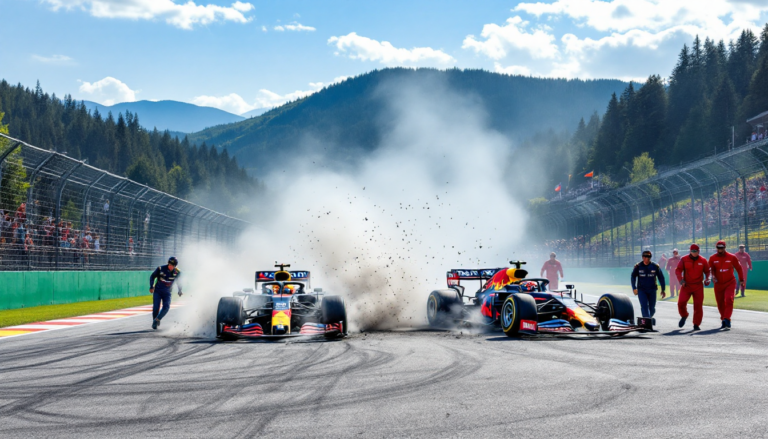Argomenti trattati
The Austrian Grand Prix turned out to be a pivotal moment for Max Verstappen, marked by a collision with Kimi Antonelli during the opening lap. This incident not only ended Verstappen’s race prematurely but also cast shadows over his championship aspirations after a weekend full of challenges. As we reflect on the events at the Red Bull Ring, the implications of this collision resonate throughout the standings and upcoming races.
Verstappen’s Tumultuous Weekend
Max Verstappen arrived at the Red Bull Ring with high hopes, having shown impressive pace during practice. However, the harsh reality of qualifying struck when a spin by Pierre Gasly triggered yellow flags, effectively ruining Verstappen’s chances to improve his lap time. Consequently, he found himself starting the race from P7—a position that was less than ideal for his championship ambitions. To make matters more intense, he was lined up just ahead of Antonelli, who was equally eager to make a mark.
As often happens in Formula 1, the chaos of the first lap unfolded quickly but took an unexpected turn when Antonelli locked his rear wheels, resulting in a collision with Verstappen. Both drivers were forced to retire, marking a disappointing end to Verstappen’s race. In a post-race interview, he described the incident as “unlucky,” highlighting that such occurrences are simply part of the racing experience. He acknowledged the competitive nature of the sport, where mistakes can happen, even if they are unintentional.
The Implications of the DNF
This incident marked Verstappen’s first Did Not Finish (DNF) since the Australian Grand Prix earlier this season—an important statistic in the fiercely competitive championship landscape. The fallout extended beyond just Verstappen; Red Bull Racing walked away from a crucial race without scoring any points, allowing their rivals to gain valuable ground in the standings. Verstappen’s DNF underscored the fragile nature of the championship race, where a single misstep can dramatically alter a driver’s season trajectory.
Meanwhile, Yuki Tsunoda’s performance compounded the team’s struggles, as he finished last after a series of unfortunate incidents, including a time penalty stemming from a collision with Franco Colapinto. The absence of points from both drivers at the Austrian GP illustrated the uphill battle Red Bull faced, especially in a season where consistency is vital for maintaining a championship lead.
Antonelli’s Perspective and Future Challenges
Kimi Antonelli, reflecting on the collision, expressed immediate regret and took full responsibility for the incident. He recounted the moments leading up to the crash, noting that he was trying to hold his position while navigating the tight corners. The rear wheel lock-up that led to the collision was an unfortunate mistake, one he recognized could have been avoided. His admission of fault, coupled with a three-place grid drop for the next race at Silverstone, highlights the importance of accountability in the sport.
This incident not only impacts Antonelli’s standing but also serves as a critical learning experience for him as a young driver in a highly competitive field. As he gears up for the upcoming races, the pressure to perform will undoubtedly mount—especially knowing that such errors can have lasting repercussions for both himself and his team.
As the championship unfolds, it will be crucial to keep an eye on how these developments affect both Verstappen’s and Antonelli’s performances in future races. The road ahead will surely be influenced by their experiences at the Austrian Grand Prix, reminding us all that in the high-stakes world of Formula 1, every race presents a new opportunity to learn and evolve.

